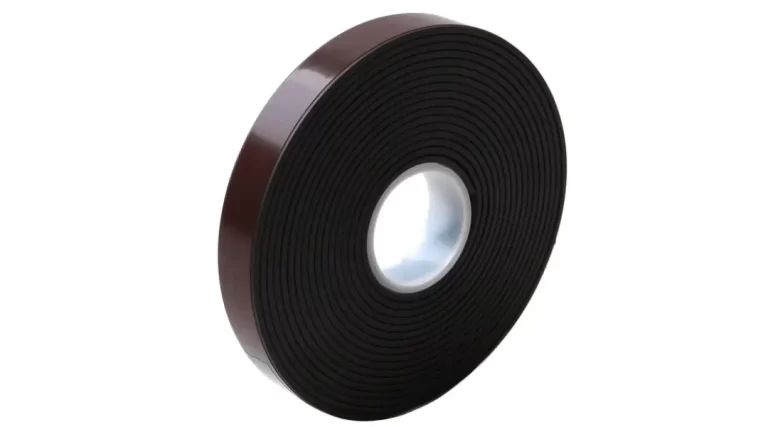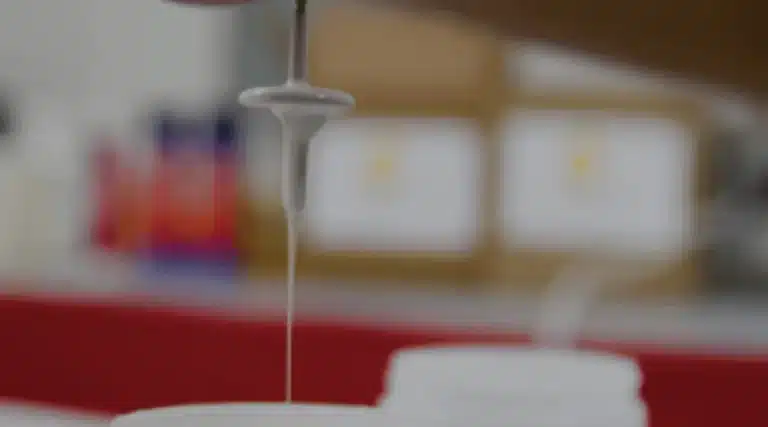Paper-to-paper adhesive is a type of glue that is exclusively designed to bond paper products. It is commonly used in the printing and packaging industry to stick paper products together, such as packaging boxes, paper bags, and envelopes. It is also widely used in the crafting industry for scrapbooking, card making, and other paper crafts.
In this article, we will define paper-to-paper adhesive, discuss its types, and explore its uses. We will also examine the advantages and disadvantages of using paper-to-paper adhesive, as well as provide some tips for its effective use.
Additionally, we will look at some alternatives and complements to paper-to-paper adhesive that can be used in place of or in conjunction with it. By the end of this article, readers will have a better understanding of paper-to-paper adhesive and its applications, allowing them to make informed decisions about using it in their projects or businesses.
Definition and Types of Paper-to-Paper Adhesive
The binding of two sheets of cellulose fiber through the application of a chemical compound that creates a strong and durable connection between them is a process known as paper-to-paper adhesion, which can be achieved through various methods and achieved using a range of materials.
There are different types of paper-to-paper adhesives, including water-based, solvent-based, and hot melt adhesives. Water-based adhesives are easy to handle, environmentally friendly, and provide good adhesion to different paper grades. Solvent-based adhesives offer high initial strength, fast drying time, and good resistance to water, oil, and chemicals. Hot melt adhesives provide fast setting time, excellent adhesion to difficult substrates, and good heat resistance.
When using paper-to-paper adhesive, it is essential to follow some tips for use, such as choosing the right adhesive for the paper type, applying the adhesive uniformly, and controlling the amount of adhesive used. There are also alternatives and complements to paper-to-paper adhesive, such as mechanical fasteners, sewing, and welding.
The benefits of paper-to-paper adhesive include improved product appearance, increased strength and durability, and reduced production costs. However, there are also some drawbacks, such as potential environmental harm, difficulty in recycling, and limited bonding strength in some applications.
The environmental impact of paper-to-paper adhesive is a significant concern, as some adhesives contain toxic chemicals that can harm the environment and human health. Therefore, it is essential to choose eco-friendly and sustainable adhesives that have a minimal impact on the environment.
In the next section, we will discuss the uses of paper-to-paper adhesive in different industries and applications.
Uses of Paper-to-Paper Adhesive
Paper-to-paper adhesive is a versatile product used in various industries and applications. In crafting and DIY projects, it is commonly used to create collages, scrapbooks, and other paper-based crafts.
Bookbinding and printing also rely heavily on paper-to-paper adhesive, as it enables the binding of pages and covers, and the lamination of printed materials.
Finally, in the packaging and labeling industry, paper-to-paper adhesive is essential in the production of cartons, boxes, and labels, ensuring they remain securely fastened and in place.
Crafting and DIY Projects
Crafting enthusiasts and those who enjoy do-it-yourself projects will find valuable applications for this type of bonding agent. Paper-to-paper adhesives can be used to create DIY decorations, such as paper garlands, origami, and paper mache projects. They are also perfect for scrapbooking ideas, as they provide a strong and long-lasting hold for attaching photos, paper cutouts, and other embellishments.
One of the advantages of using paper-to-paper adhesives is that they are non-toxic and safe to use, making them ideal for crafting projects that involve children. However, it is important to note that some types of paper-to-paper adhesives may be more suitable for certain projects than others, depending on the materials being used.
Moving on to bookbinding and printing, paper-to-paper adhesives can also be used for binding books, creating paper bags, and even for printing purposes.
Bookbinding and Printing
Bookbinding and printing enthusiasts can elevate their projects with the help of a reliable bonding agent that ensures neat, sturdy, and professional-looking results.
When it comes to bookbinding techniques, paper-to-paper adhesive plays a crucial role in ensuring that pages remain securely bound together. This adhesive offers a strong and durable bond, which is essential for books that are frequently used or handled.
Printing technologies also benefit from the use of paper-to-paper adhesive as it helps prevent ink smudging and ensures that the final product is of high quality.
Additionally, paper-to-paper adhesive can be used to create custom book covers, which can add a unique touch to any project. While the use of paper-to-paper adhesive has numerous benefits, it’s essential to note that it can be challenging to remove, and if not used correctly, it can result in unsightly and messy results.
In summary, mastering paper-to-paper adhesive is a crucial step for any bookbinding or printing project, and it’s essential to use it carefully to achieve the desired results.
Moving forward to the next section about packaging and labeling, it’s worth noting that paper-to-paper adhesive is also an excellent option for securing labels and packaging materials.
Packaging and Labeling
The art of packaging and labeling requires a meticulous attention to detail and an understanding of the importance of presentation in conveying a brand’s message and values to potential customers. As packaging trends continue to evolve, it is important for companies to keep up with the latest design aesthetics and techniques to ensure that their products stand out on the shelves.
Label design plays a crucial role in this process, as it not only provides necessary information about the product but also serves as a visual representation of the brand.
Paper-to-paper adhesive is a popular choice for packaging and labeling as it provides a strong bond between the label and the package without leaving any residue behind. This adhesive is also environmentally friendly, making it an ideal choice for companies that prioritize sustainability.
The use of paper-to-paper adhesive has its pros and cons, which will be discussed in the subsequent section.
Pros of Using Paper-to-Paper Adhesive
Utilizing paper-to-paper adhesive provides a range of benefits that can enhance the efficiency and quality of various paper-related projects. Some of the advantages of using this type of bonding agent include:
-
Strong and permanent bond: Paper-to-paper adhesive creates a strong and permanent bond that can withstand the wear and tear of transportation and handling.
-
Easy to apply: This type of adhesive is easy to apply, requiring minimal effort and time to achieve the desired result.
-
Cost-effective: Using paper-to-paper adhesive is a cost-effective option compared to other bonding agents, making it ideal for small and large-scale projects.
Overall, the use of paper-to-paper adhesive is a wise choice for those looking to improve the durability and quality of their paper-based projects. However, there are also cons to consider, which will be discussed in the subsequent section.
Cons of Using Paper-to-Paper Adhesive
While there are certainly benefits to using paper-to-paper adhesives, it is important to acknowledge the drawbacks as well.
One major concern is the environmental impact of these products, which often contain chemicals and materials that can be harmful to the planet.
Additionally, while some paper-to-paper adhesive products may provide short-term bonding solutions, their long-term durability can be questionable.
It is important to weigh the pros and cons of using these adhesives before making a decision.
That being said, with proper usage and consideration of the potential downsides, paper-to-paper bonding agents can be an effective tool in certain situations.
Moving forward, it is crucial to consider tips for using these products effectively and responsibly.
Tips for Using Paper-to-Paper Adhesive
Effective application of paper-to-paper bonding agents requires certain tips to be followed to enhance their functionality and reduce potential risks.
Choosing the right adhesive is crucial for achieving the desired result. It is important to select an adhesive that is compatible with the paper type and the application method.
Common mistakes include applying too much or too little adhesive, not allowing sufficient drying time, and using the wrong adhesive for the job. To avoid such mistakes, it is recommended to read the instructions carefully, conduct a trial run, and follow the manufacturer’s recommendations.
Additionally, keeping the work surface clean and free from dust and debris can improve the bond strength. Proper storage of the adhesive is also important to ensure its effectiveness.
By following these tips, one can achieve a strong and durable bond with paper-to-paper adhesive.
In the subsequent section, we will discuss alternatives and complements to paper-to-paper adhesive.
Alternatives and Complements to Paper-to-Paper Adhesive
Exploring additional options for bonding materials in paper-based projects can provide greater flexibility and potentially improve the overall outcome of the project. While paper-to-paper adhesive is a common choice for bonding paper materials, there are alternative options and complementary techniques that can be used.
For instance, double-sided tape can be used as an alternative to paper-to-paper adhesive, especially when a temporary bond is needed. Stitching and sewing can also be used to bond paper materials, especially when the paper is thick or when a unique design element is desired.
Additionally, heat-activated adhesives can be used to bond paper materials, particularly in cases where a strong and permanent bond is required. Complementary techniques such as embossing and stamping can also be used to enhance the bond between paper materials.
Ultimately, the choice of bonding technique will depend on the specific needs of the project and the desired outcome.
Conclusion
Paper-to-paper adhesive is a type of glue that is specifically designed for use on paper products. It is available in a variety of forms and can be used in a wide range of applications, from crafting and scrapbooking to bookbinding and packaging.
There are several types of paper-to-paper adhesive available, including wet glues, dry adhesives, and pressure-sensitive adhesives. One of the key benefits of using paper-to-paper adhesive is that it is specifically designed for use with paper products, which means that it provides a strong and reliable bond that is capable of withstanding the rigors of everyday use.
Additionally, paper-to-paper adhesive is typically easy to use, with most products featuring simple application methods that require minimal effort or skill. However, there are also some drawbacks to using paper-to-paper adhesive.
For example, some types of adhesive can be messy or difficult to work with, and may require some trial and error to achieve the desired results. Additionally, some types of adhesive may be more expensive than others, which can be a consideration for those on a tight budget.
Despite these potential drawbacks, paper-to-paper adhesive remains a popular choice for those looking to create high-quality paper products that are durable, long-lasting, and visually appealing. And with the wide range of products available, there is sure to be an option that is perfect for your specific needs and preferences.
One potential objection to using paper-to-paper adhesive may be concerns about its environmental impact. However, many manufacturers now offer eco-friendly options that are made using sustainable materials and processes, making it possible to create beautiful paper products without harming the planet.
By choosing a high-quality paper-to-paper adhesive that is responsibly sourced and produced, you can enjoy all the benefits of this versatile and effective glue while also doing your part to protect the environment.





